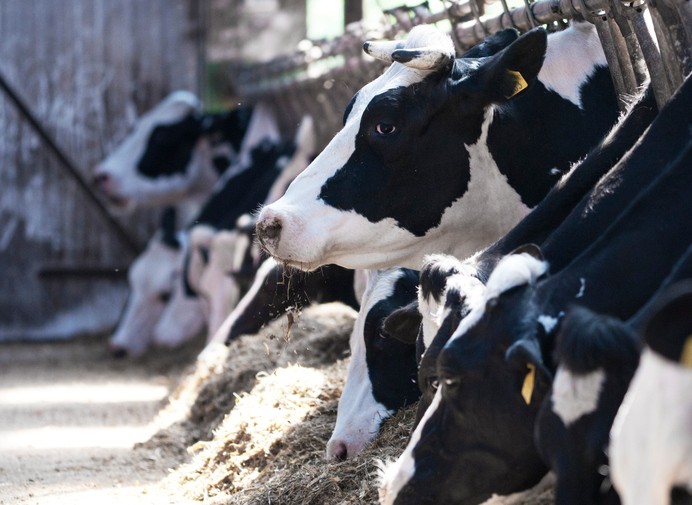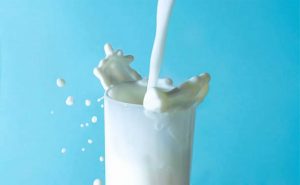They’re waiting to see when schools reopen nationwide. Waiting for the latest news on a coronavirus vaccine. Waiting for the conclusion of a difficult political season. And, for dairy farmers struggling through a rollercoaster year, waiting to see whether Congress can come to agreement on disaster assistance that may at least somewhat salvage bottom lines damaged by ongoing economic disruptions.
But waiting doesn’t mean being passive; knowing that much is beyond anyone’s control doesn’t mean giving up on trying to improve farmer lives. Pursuing those improvements for our members is what we do in Washington. And even as elected officials start thinking more about November ballots (or September and October ballots, this mail-driven election season) than legislation, much can be done to address the needs of dairy as we continue the struggle to weather this pandemic.
First things first: Despite valuable and important measures to date, dairy’s economic situation remains precarious. USDA’s badly needed CFAP program has bolstered many farmers’ cash flows (and its deadline for application has been extended to Sept. 11, thanks to USDA heeding the requests of NMPF and other agriculture groups), and economic stimulus in the form of USDA dairy-product purchases for distribution to struggling families did wonders for dairy markets in the dark days of April through June.
Those efforts, combined with proactive actions from farmers and cooperatives to better align supply with pandemic-depleted demand, fueled a rebound as dramatic as the decline. The comeback was so decisive, in fact, that normal price swings fell momentarily out of whack, with record-shattering cheese prices outpacing fluid-milk gains to the point of triggering negative Producer Price Differentials (PPDs) in milk checks in June and July.
It’s important to remember that, while it is frustrating to see negative PPDs, they have been the product of a rapidly improving price picture – a sign of a real market recovery that occurred when forceful measures needed to work, and did. Without the actions that created the price recovery there would have been no or very small negative PPDs, but overall milk prices would have been much lower.
And the phenomenon will be short-lived as relative prices among different classes of milk return to more normal relationships. But even here, there’s a rub. Part of the reason negative PPDs will shrink is because cash cheese prices fell hard from mid-July and into the first part of August and will take milk prices back down when this drop shows up in milk checks. The possibility remains that Dairy Margin Coverage payments, which at one point seemed likely to be limited to spring months, may be triggered again later this year.
Based on current price calculations, dairy-farmer income in September could be quite a bit less than it was in July because of lower product prices, making the outlook for the rest of the year more challenging than producers were hoping for in mid-summer. That brings policy needs into clearer focus and makes additional disaster assistance a higher priority.
Congress still has time to – and must – pass another COVID-19 relief package when lawmakers return this month. Negotiations have stalled over several issues, including the scope and duration of enhanced unemployment benefits as well as state and local aid. Fortunately, both the House-passed HEROES Act and the Senate-proposed HEALS Act both include additional funding for agriculture. The HEROES Act provides greater specifics, including:
Authorizing additional direct payments based on second-quarter losses without imposing payment limits;
Creating a new dairy donation program to help farmers and consumers;
And making enhancements related to the Dairy Margin Coverage program.
While the HEALS Act does not include specific directives, it does provide new funding to USDA, which will allow for additional disaster aid. Along with resolving these differences, negotiators also must determine the fate of additional nutrition assistance that’s important to helping the millions of Americans who face food insecurity and need dairy to nourish their families.
NMPF is advocating for additional relief for dairy producers that reflects the losses they have suffered, no matter the size of an operation. We are also working with Congress on a dairy donation program that can maximize dairy consumption among food-insecure populations.
Direct purchases of dairy products for distribution to consumers in need is a win-win, and they will be critically important. Disaster assistance paid directly to producers is very helpful and always appreciated; still, the market price impact on all milk production through well-targeted purchases ripples through the entire rural economy, stabilizing markets and maintaining key links on the chain from farm to fork that benefit everyone.
We of course are working for assistance on all fronts – but we know from long experience just how powerful a tool these product purchases can be.
Assistance continues to be needed, and we know how effective it can be. It’s as important as ever for Congress to act and for USDA to use the tools it has available. Despite headlines, the end of this crisis is not yet in sight. Our efforts will continue through the long haul.













